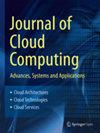Next-generation cyber attack prediction for IoT systems: leveraging multi-class SVM and optimized CHAID decision tree
IF 3.7
3区 计算机科学
Q2 COMPUTER SCIENCE, INFORMATION SYSTEMS
Journal of Cloud Computing-Advances Systems and Applications
Pub Date : 2023-09-29
DOI:10.1186/s13677-023-00517-4
引用次数: 1
Abstract
Abstract Billions of gadgets are already online, making the IoT an essential aspect of daily life. However, the interconnected nature of IoT devices also leaves them open to cyber threats. The quantity and sophistication of cyber assaults aimed against Internet of Things (IoT) systems have skyrocketed in recent years. This paper proposes a next-generation cyber attack prediction framework for IoT systems. The framework uses the multi-class support vector machine (SVM) and the improved CHAID decision tree machine learning methods. IoT traffic is classified using a multi-class support vector machine to identify various types of attacks. The SVM model is then optimized with the help of the CHAID decision tree, which prioritizes the attributes most relevant to the categorization of attacks. The proposed framework was evaluated on a real-world dataset of IoT traffic. The findings demonstrate the framework's ability to categorize attacks accurately. The framework may determine which attributes are most crucial for attack categorization to enhance the SVM model's precision. The proposed technique focuses on network traffic characteristics that can be signs of cybersecurity threats on IoT networks and affected Network nodes. Selected feature vectors were also created utilizing the elements acquired on every IoT console. The evaluation results on the Multistep Cyber-Attack Dataset (MSCAD) show that the proposed CHAID decision tree can significantly predict the multi-stage cyber attack with 99.72% accuracy. Such accurate prediction is essential in managing cyber attacks in real-time communication. Because of its efficiency and scalability, the model may be used to forecast cyber attacks in real time, even in massive IoT installations. Because of its computing efficiency, it can make accurate predictions rapidly, allowing for prompt detection and action. By locating possible entry points for attacks and mitigating them, the framework helps strengthen the safety of IoT systems.物联网系统的下一代网络攻击预测:利用多类SVM和优化的CHAID决策树
数十亿的小工具已经上线,使物联网成为日常生活的一个重要方面。然而,物联网设备的互联特性也使它们容易受到网络威胁。近年来,针对物联网(IoT)系统的网络攻击的数量和复杂程度急剧上升。本文提出了物联网系统的下一代网络攻击预测框架。该框架采用了多类支持向量机(SVM)和改进的CHAID决策树机器学习方法。使用多类支持向量机对物联网流量进行分类,以识别各种类型的攻击。然后利用CHAID决策树对SVM模型进行优化,CHAID决策树对与攻击分类最相关的属性进行优先级排序。提出的框架在物联网流量的真实数据集上进行了评估。研究结果表明,该框架能够准确地对攻击进行分类。该框架可以确定哪些属性对攻击分类最重要,以提高支持向量机模型的精度。所提出的技术侧重于网络流量特征,这些特征可能是物联网网络和受影响网络节点上网络安全威胁的标志。还利用在每个物联网控制台上获取的元素创建了选定的特征向量。在多步网络攻击数据集(MSCAD)上的评估结果表明,所提出的CHAID决策树能够显著预测多阶段网络攻击,准确率达到99.72%。这种准确的预测对于管理实时通信中的网络攻击至关重要。由于其效率和可扩展性,该模型可用于实时预测网络攻击,甚至在大规模物联网安装中也是如此。由于其计算效率,它可以快速做出准确的预测,从而及时发现和采取行动。通过定位可能的攻击入口点并减轻攻击,该框架有助于加强物联网系统的安全性。
本文章由计算机程序翻译,如有差异,请以英文原文为准。
求助全文
约1分钟内获得全文
求助全文
来源期刊

Journal of Cloud Computing-Advances Systems and Applications
Computer Science-Computer Networks and Communications
CiteScore
6.80
自引率
7.50%
发文量
76
审稿时长
75 days
期刊介绍:
The Journal of Cloud Computing: Advances, Systems and Applications (JoCCASA) will publish research articles on all aspects of Cloud Computing. Principally, articles will address topics that are core to Cloud Computing, focusing on the Cloud applications, the Cloud systems, and the advances that will lead to the Clouds of the future. Comprehensive review and survey articles that offer up new insights, and lay the foundations for further exploratory and experimental work, are also relevant.
 求助内容:
求助内容: 应助结果提醒方式:
应助结果提醒方式:


